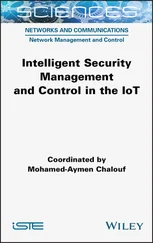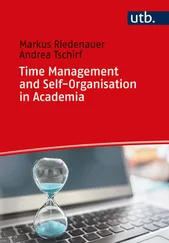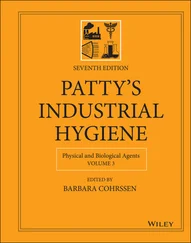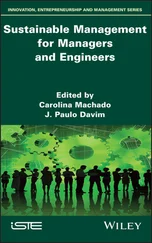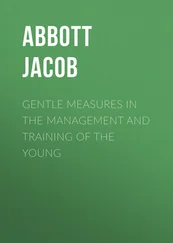New to ISO 45001:2018 is its consideration of “interested parties.” While ISO standards have traditionally included references to “interested parties” more recent versions have focused on a broader universe by requiring that the holistic “context of the organization” be considered when evaluating organizational impacts. Aside from interested parties in determining the context of the organization, considerations are made regarding possible implications and impacts from external as well as internal issues. In fact, industrial hygienists and OH&S professionals have always considered internal issues such as health and safety skills, activities and chemicals as well as biological and radiological materials. What is different, is the consideration of other types of external issues, such as cultures, competencies, and resources that have an impact on the organization and subsequently, the health and safety of its workforce and workplaces.
One tool often used at the top level to conduct this analysis is PESTLE (Political, Economic, Social, Technological, Legal, and Environmental). Essentially, using PESTLE the organization evaluates each element and determine what particular aspects are relevant to the organization. Often this is followed by SWOT (Strengths, Weaknesses, Opportunities, and Threats) analysis to identify whether each aspect is a risk or an opportunity.
5.4 Leadership and Worker Participation (§5)
These two pieces – leadership and worker participation – are historically considered linchpins of the OHSMS approach. Detailed requirements are included for each in ISO 45001. Dating back to the earliest OHSMS approaches (e.g. BS8800, OSHA guidelines, SafetyMap, 18001:1999) there has been ongoing refinement and clarification of these pieces, as seen in the ILO's OHSMS, 18001:2007 and ANSI Z10, to name a few.
5.4.1 Leadership and Commitment
All OHSMS approaches include top management leadership and commitment requirements, ISO 45001:2018 continues this, and defines (§3.12) top management as a “person or group of people who directs and controls an organization at the highest level” (50). Notes to this definition state that: “top management has the power to delegate authority and provide resources within the organization , provided ultimate responsibility for the OH&S management system is retained; and, if the scope of the management system covers only part of an organization, then top management refers to those who direct and control that part of the organization” (50).
This section (§5.1)contains guidance and requirements related to top management “demonstrate[ing] leadership and commitment with respect to the OH&S management system” (51). These include: taking responsibility and accountability for the prevention of work‐related injury and ill health; ensuring the integration of the OHSMS into business processes; and ensuring that there are sufficient resources for the OHSMS's functioning – to name a few.
Three clauses that demonstrate important advancements from earlier OHSMS approaches are §5.1.j, §5.1.k, and §5.1.m.
Clause j requires that “top management shall demonstrate leadership and commitment with respect to the OH&S management system by developing, leading, and promoting a culture in the organization that supports the intended outcomes of the OH&S management system” (51). This requirement reinforces the role that “culture” has in OH&S performance, and while directed at top management, it provides industrial hygiene and OH&S professionals with an important tool.
Clause k requires that “top management shall demonstrate leadership and commitment with respect to the OH&S management system by protecting workers from reprisals when reporting incidents, hazards, risks, and opportunities” (51). This requirement supports greater worker engagement.
Clause m requires that “top management shall demonstrate leadership and commitment with respect to the OH&S management system by supporting the establishment and functioning of health and safety committees” (51). This requirement helps promote greater participation and transparency.
5.4.2 Consultation and Participation of Workers
Worker consultation and participation guidance and requirements are nested throughout ISO 45001:2018. The standard defines consultation (§3.5) as “seeking views before making a decision,” and participation (§3.4) as “involvement in decision making” (52). In this section (§5.4), consultation and participation requirements are broadly summed up as “the organization shall establish, implement, and maintain a process(es) for consultation and participation of workers at all applicable levels and functions, and, where they exist, workers' representatives, in the development, planning, implementation, performance evaluation and actions for improvement of the OH&S management system” (53). Key here is providing time, training, and resources, as well as removing barriers for effective participation. Clause §5.4.d requires “emphasiz[ing] the consultation of non‐managerial workers” in a range of activities, including: OH&S policy (d.2); assigning organizational roles, responsibilities, and authorities as applicable (d.3); planning, establishing, implementing, and maintaining an audit program (d.8); and others. In like fashion, clause 5.4.e requires “emphasiz[ing] the participation of non‐managerial workers” in a range of activities, including: identifying hazards and assessing risks and opportunities (e.2); determining actions to eliminate hazards and reduce OH&S risks (e.3); investigating incidents and nonconformities and determining corrective actions (e.7); and others (54). These requirements can, in some circumstances, create a challenge where the relationship between workers and employers is regulated by law. That said, the thinking behind emphasizing workers who are often closest to the hazard, is to leverage their direct knowledge and experience in the ways of work, designed vs actual, that impact health and safety risks.
The OH&S policy provides context and trajectory for an OHSMS. ISO 45001:2018 defines policy (§3.14) generically as the ”intentions and direction of an organization, as formally expressed by its top management,” (55) and OH&S policy (§3.15) specifically as the “policy to prevent work‐related injury and ill health to workers and to provide safe and healthy workplaces” (55). This section (§5.2)provides guidance and requirement for establishing, implementing and maintaining an OH&S policy that:
“…includes a commitment to provide safe and healthy working conditions for the prevention of work‐related injury and ill health and is appropriate to the purpose, size and context of the organization and to the specific nature of its OH&S risks and OH&S opportunities; provides a framework for setting the OH&S objectives; includes a commitment to fulfil legal requirements and other requirements; includes a commitment to eliminate hazards and reduce OH&S risks; includes a commitment to continual improvement of the OH&S management system; and, includes a commitment to consultation and participation of workers, and, where they exist, workers' representatives” (51).
As well, ISO 45001:2018 requires that the OH&S policy is “available as documented information; communicated within the organization; available to interested parties as, appropriate; and relevant and appropriate” (53).
5.4.4 Organizational Roles, Responsibilities, and Authorities
Requirements to define OH&S roles, responsibilities, and authorities are contained in ISO 45001:2018 as well as with earlier OHSMS approaches. This section (§5.3)requires that “top management shall ensure that the responsibilities and authorities for relevant roles within the OH&S management system are assigned and communicated at all levels within the organization… [and that] workers at each level of the organization shall assume responsibility for those aspects of the [OHSMS] over with they have control” (53). Requirement for assigning responsibility and authority include OHSMS conformance with ISO 45001, and reporting on the OHSMS's performance to top management.
Читать дальше


